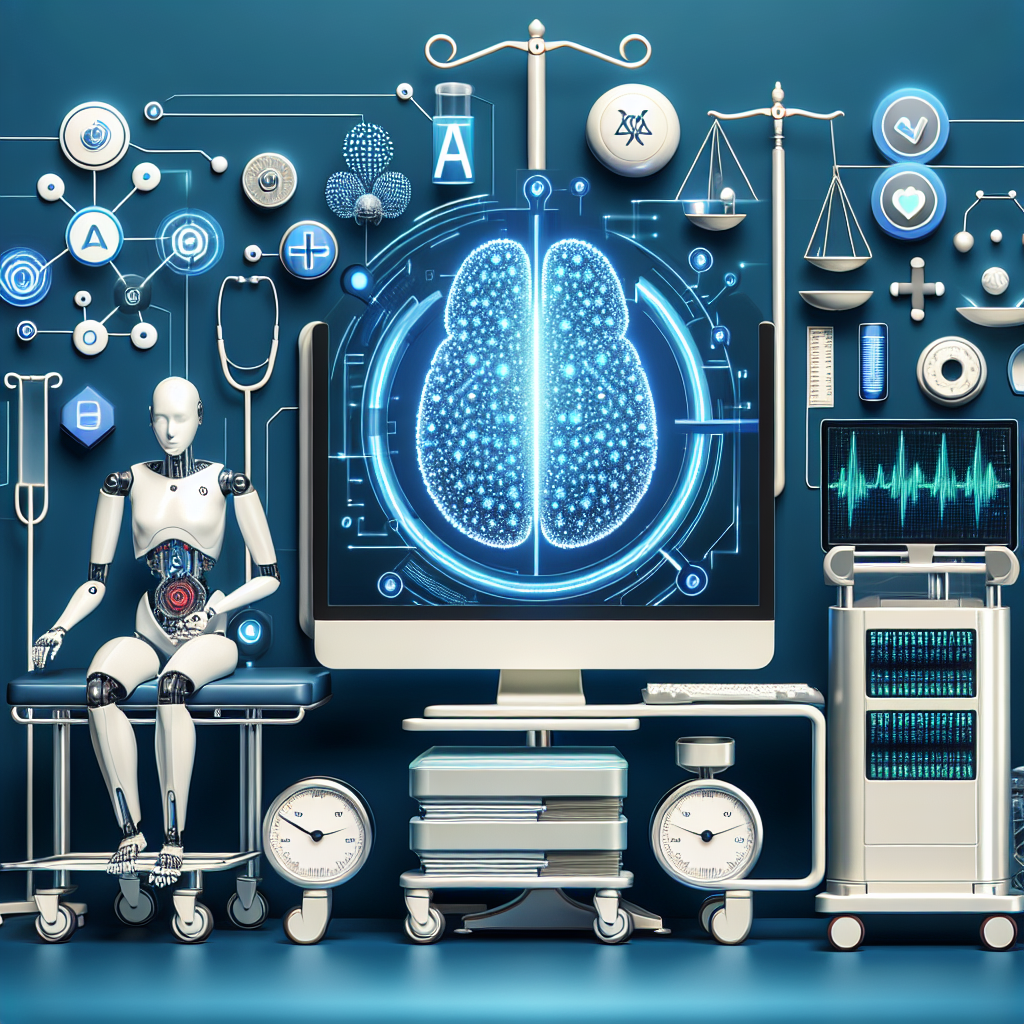AI Integration in Healthcare Risk Adjustment
In recent years, artificial intelligence (AI) has become increasingly prevalent in the healthcare industry, with applications ranging from diagnostic tools to predictive analytics. One area where AI is making a significant impact is in healthcare risk adjustment, which is the process of identifying and mitigating financial risks associated with patient care. By leveraging AI technology, healthcare organizations can more effectively identify high-risk patients, optimize care delivery, and improve overall patient outcomes.
What is healthcare risk adjustment?
Healthcare risk adjustment is a process used by payers and providers to assess the health status of their patient population and adjust reimbursement rates accordingly. In the United States, risk adjustment is particularly important for Medicare Advantage and Affordable Care Act (ACA) plans, where reimbursement is based on the health status of enrolled members. By accurately assessing the health risk of their patient population, healthcare organizations can ensure that they are properly compensated for the care they provide.
Why is AI integration important in healthcare risk adjustment?
AI integration is important in healthcare risk adjustment for several reasons. First, AI technology can analyze vast amounts of data much more quickly and accurately than humans, allowing for more robust risk assessment and prediction. This can help healthcare organizations identify high-risk patients earlier, enabling them to intervene proactively and prevent costly complications.
Additionally, AI can help healthcare organizations better understand the complex relationships between different risk factors and patient outcomes. By analyzing data from multiple sources, including electronic health records, claims data, and social determinants of health, AI algorithms can identify patterns and trends that may not be apparent to human analysts. This can lead to more accurate risk scoring and better care planning for high-risk patients.
Another key benefit of AI integration in healthcare risk adjustment is the ability to automate tedious and time-consuming tasks, such as data entry and coding. By automating these processes, healthcare organizations can free up valuable time and resources that can be better spent on patient care and quality improvement initiatives.
How is AI being used in healthcare risk adjustment?
AI is being used in healthcare risk adjustment in a variety of ways, including:
1. Predictive analytics: AI algorithms can analyze patient data to identify individuals at high risk for adverse health outcomes, such as hospital readmissions or complications. By predicting these risks in advance, healthcare organizations can intervene early and prevent costly events.
2. Natural language processing: AI-powered natural language processing (NLP) tools can extract valuable information from unstructured data sources, such as clinical notes and patient feedback. This can provide valuable insights into patient health status and risk factors that may not be captured in structured data fields.
3. Machine learning: Machine learning algorithms can analyze large datasets to identify patterns and trends that may be indicative of patient risk. By training these algorithms on historical data, healthcare organizations can develop more accurate risk prediction models that can help guide care planning and resource allocation.
4. Image recognition: AI-powered image recognition tools can analyze medical imaging studies, such as X-rays and MRIs, to identify signs of disease or injury. By automating the analysis of these images, healthcare organizations can expedite the diagnosis process and improve patient outcomes.
What are the benefits of AI integration in healthcare risk adjustment?
There are several benefits to integrating AI technology into healthcare risk adjustment, including:
1. Improved accuracy: AI algorithms can analyze vast amounts of data with a high degree of accuracy, leading to more precise risk assessment and prediction. This can help healthcare organizations better identify high-risk patients and tailor interventions to their specific needs.
2. Enhanced efficiency: AI technology can automate time-consuming tasks, such as data entry and coding, freeing up valuable resources for other critical activities. This can streamline the risk adjustment process and improve overall operational efficiency.
3. Cost savings: By identifying high-risk patients earlier and intervening proactively, healthcare organizations can prevent costly complications and hospitalizations. This can lead to significant cost savings and improved financial performance.
4. Better patient outcomes: By leveraging AI technology to identify and manage patient risk, healthcare organizations can improve patient outcomes and quality of care. This can lead to higher patient satisfaction and better overall population health.
FAQs
Q: Is AI technology secure and compliant with healthcare regulations?
A: Yes, AI technology used in healthcare risk adjustment must adhere to strict security and compliance standards, such as HIPAA and GDPR. Healthcare organizations should work with vendors who have experience in healthcare data security and compliance to ensure that patient data is protected.
Q: How can healthcare organizations integrate AI technology into their existing risk adjustment processes?
A: Healthcare organizations can integrate AI technology into their risk adjustment processes by partnering with vendors who specialize in healthcare AI solutions. These vendors can help customize AI algorithms to suit the specific needs of the organization and provide training and support for implementation.
Q: What are some common challenges associated with AI integration in healthcare risk adjustment?
A: Some common challenges associated with AI integration in healthcare risk adjustment include data quality issues, lack of interoperability between systems, and resistance to change from staff. Healthcare organizations should address these challenges proactively to ensure a successful implementation.
In conclusion, AI integration in healthcare risk adjustment is a powerful tool that can help healthcare organizations more effectively identify high-risk patients, optimize care delivery, and improve patient outcomes. By leveraging AI technology to analyze patient data, predict health risks, and automate tedious tasks, healthcare organizations can streamline the risk adjustment process and achieve better financial performance. With the right strategy and support, healthcare organizations can harness the power of AI to transform risk adjustment and deliver high-quality, cost-effective care to their patient populations.

